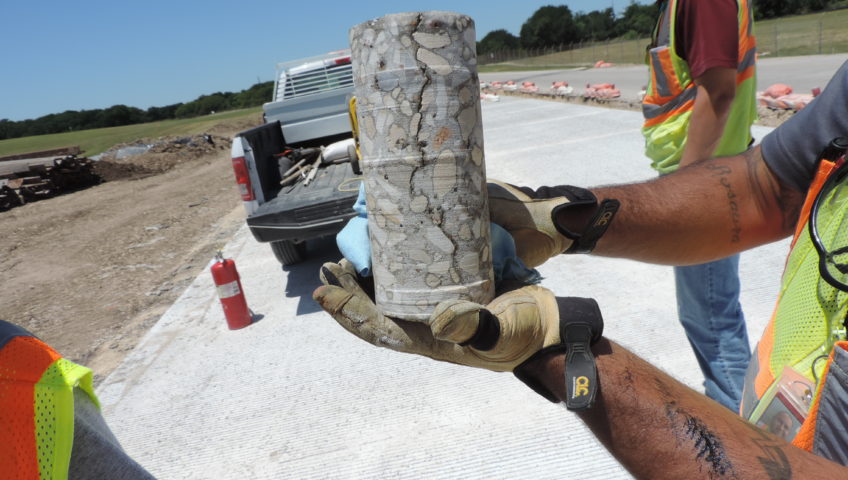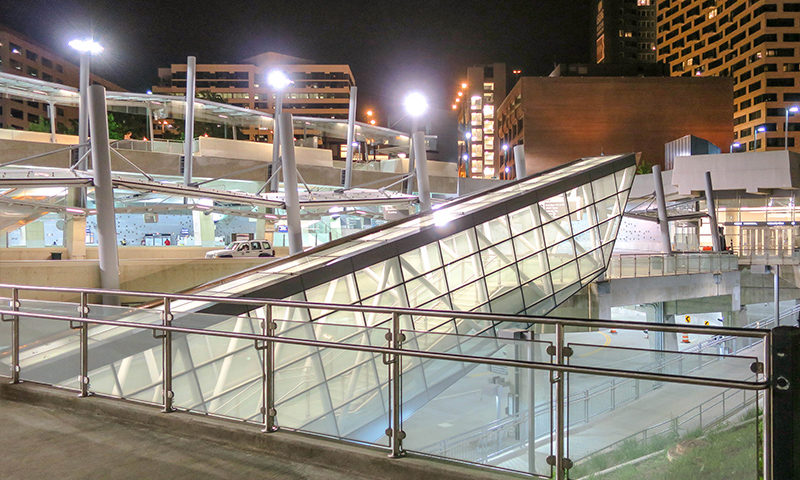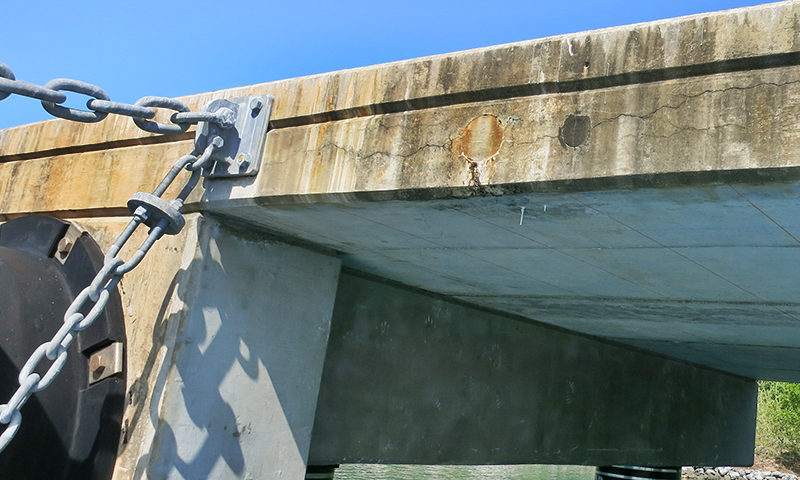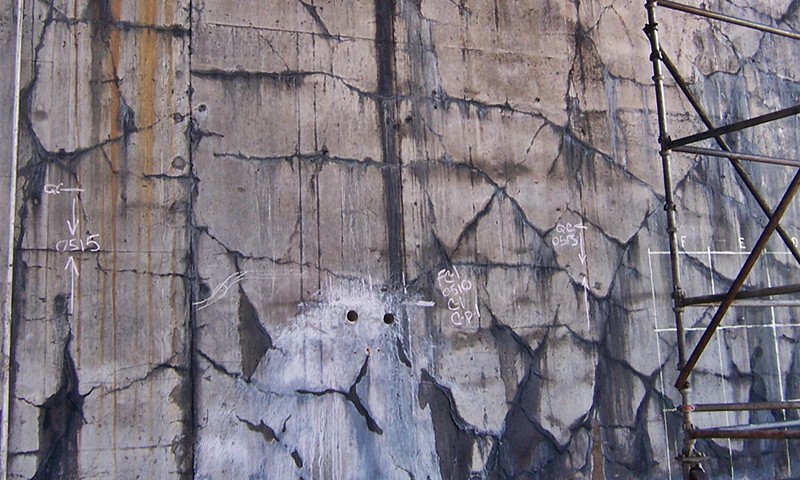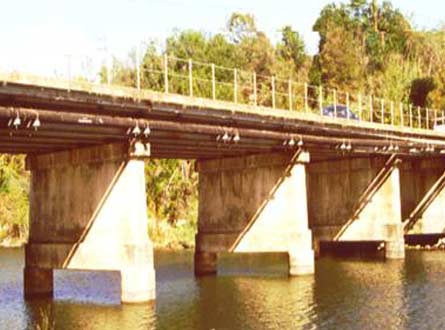Carrasquillo Associates investigated cracking in a new reinforced concrete pavement. The cracking, consisting of regularly spaced longitudinal cracks occurring immediately over the reinforcement, was observed to have occurred a few days after the placement. CA’s analysis revealed an error in the dosage of retarder in some batches of the ready-mix concrete. In these batches, the retarder dosage was based on the entire weight of cementitious materials, rather than just the portland cement, resulting in excessive retardation. Excessive retardation made the concrete pavement susceptible to cracking due to shrinkage and dimensional movements. This propensity for cracking was exacerbated by the non-typical shallow top cover specified in the plans and drawings. CA’s investigation revealed that areas with the proper retarder dosage exhibited infrequent cracking, as compared to the extensive cracking in the remainder of the pavement where the retarder dosage was incorrect.
